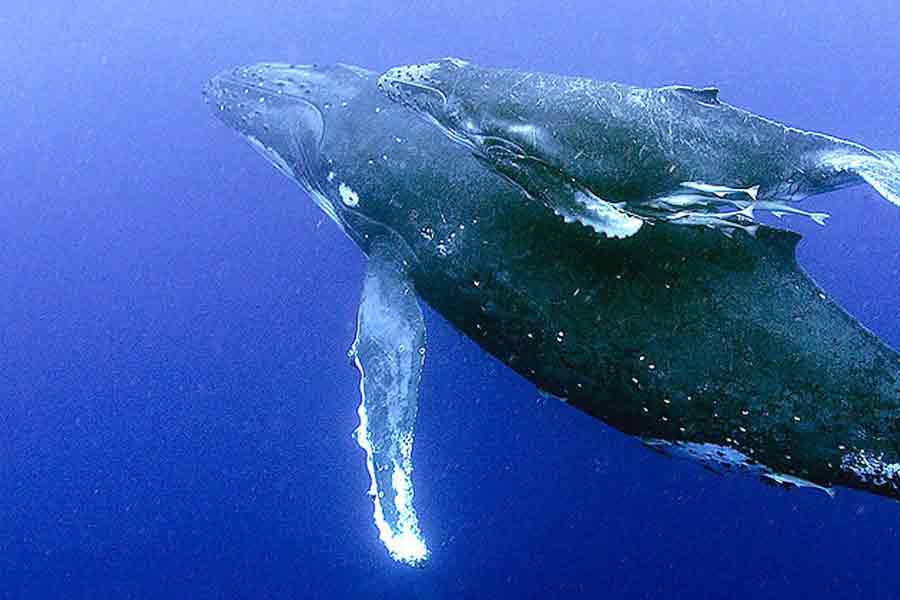
Humpback whales are also known as «singing whales» because they produce the most beautiful melodies in the depths of the ocean. These enormous animals can have a calf every three years. Considering that the smaller the calf, the more vulnerable it is, it is deduced that the mother’s care in the first year of life is crucial to ensure its growth until it reaches a size that keeps predators at bay.
Being mammals, the mother-child relationship is very close as the calf depends on maternal milk, which it consumes in large quantities, allowing it to gain up to forty kilograms of weight per day. During this period, the mother becomes a vigilant guardian of every movement of the calf. That’s why it is often seen swimming on the mother’s back. With this behavior, the female covers the area of the sea beneath the calf, as it is the place from which attacks may arise. It also keeps the path to the surface clear for the calf to breathe comfortably.
Humpback whales are often attacked by a small species of shark known as the «cookiecutter shark.» These sharks tend to bite the enormous whales, causing significant portions of their blubber to be removed. Obviously, this does not kill the whale, but it is common to see adult individuals with marks from this type of shark attack. Such an attack could be very risky for a calf that has not yet developed a substantial blubber layer, as it could cause serious injuries and the possibility of infections. That’s why the mother whale remains alert, trying to prevent such attacks.
Humpback whales have developed pectoral fins that can measure up to five meters and are the largest appendages of any living creature. In the photo, we see a typical behavior of a cautious mother. Perhaps she has never seen a diver before, which is why she keeps her calf close to the surface while attentively watching it with her left eye, while the diver takes the photo. Despite that, she decided not to move too far away. The calf, typically curious, doesn’t miss a detail of the scene.
«You cannot defend what you do not love, and you cannot love what you do not know.»

